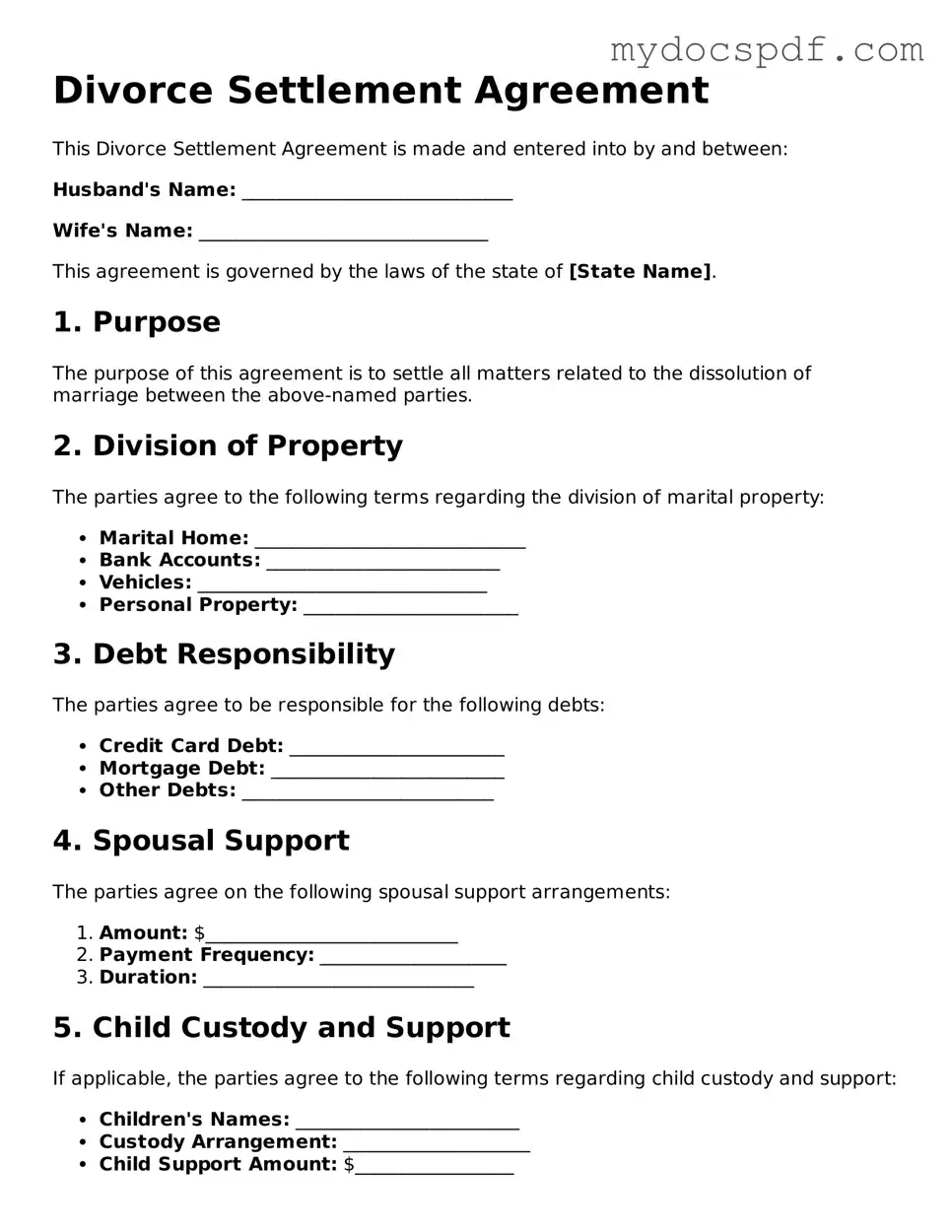Divorce Settlement Agreement
This Divorce Settlement Agreement is made and entered into by and between:
Husband's Name: _____________________________
Wife's Name: _______________________________
This agreement is governed by the laws of the state of [State Name].
1. Purpose
The purpose of this agreement is to settle all matters related to the dissolution of marriage between the above-named parties.
2. Division of Property
The parties agree to the following terms regarding the division of marital property:
- Marital Home: _____________________________
- Bank Accounts: _________________________
- Vehicles: _______________________________
- Personal Property: _______________________
3. Debt Responsibility
The parties agree to be responsible for the following debts:
- Credit Card Debt: _______________________
- Mortgage Debt: _________________________
- Other Debts: ___________________________
4. Spousal Support
The parties agree on the following spousal support arrangements:
- Amount: $___________________________
- Payment Frequency: ____________________
- Duration: _____________________________
5. Child Custody and Support
If applicable, the parties agree to the following terms regarding child custody and support:
- Children's Names: ________________________
- Custody Arrangement: ____________________
- Child Support Amount: $_________________
6. Final Agreement
This agreement represents the full understanding of the parties. Any modifications must be made in writing and agreed upon by both parties.
Both parties have read and understand this agreement. By signing below, they agree to its terms:
Husband's Signature: ________________________ Date: ________________
Wife's Signature: __________________________ Date: ________________
This agreement is effective as of the date last signed by a party.
